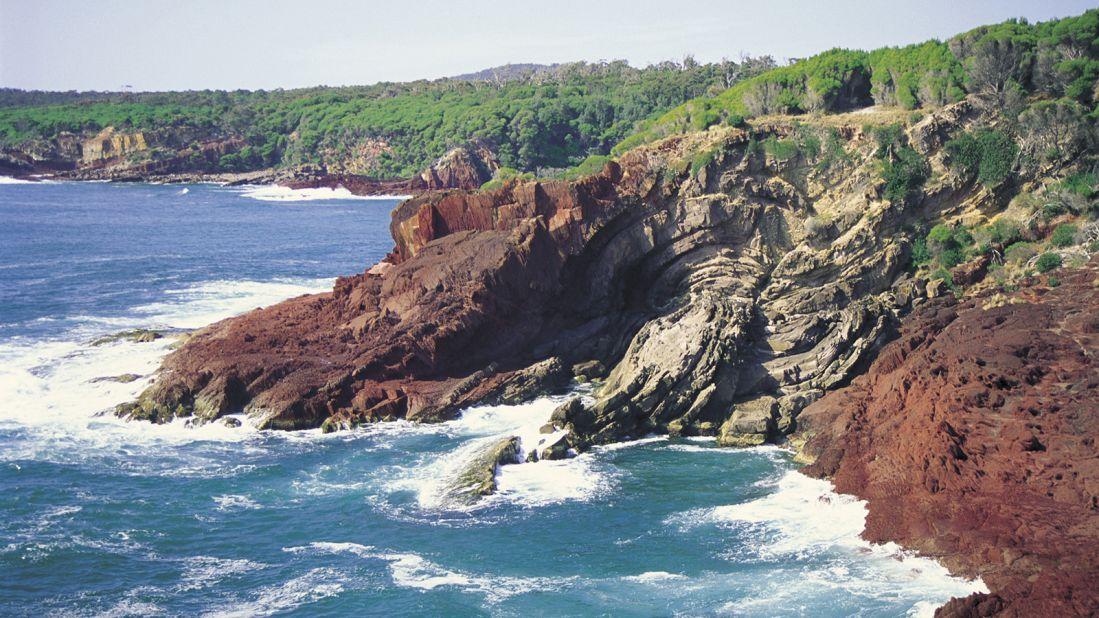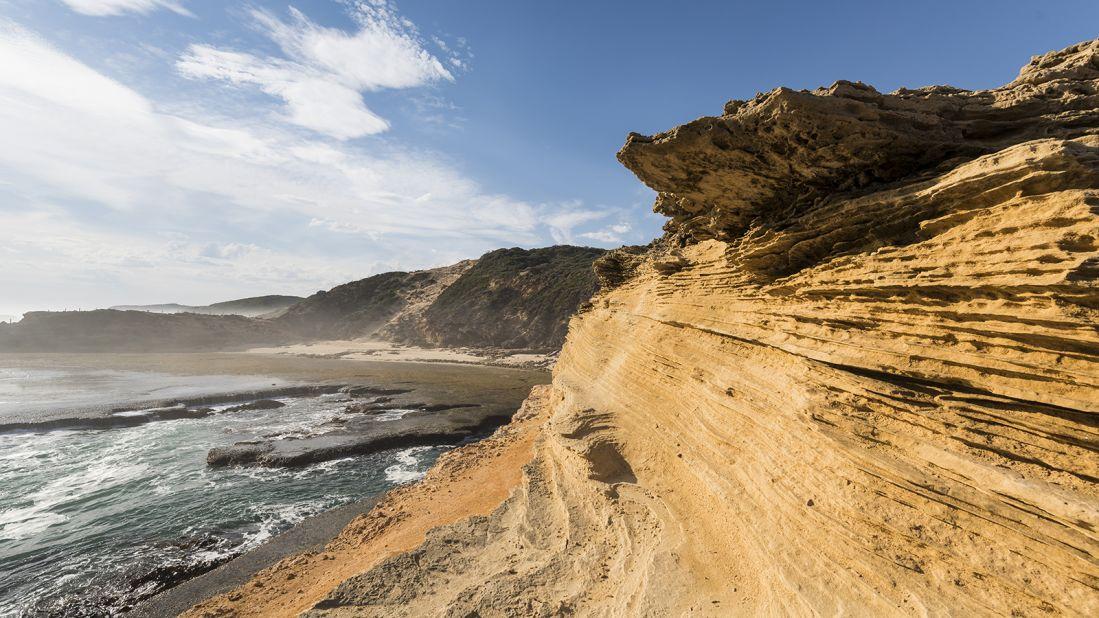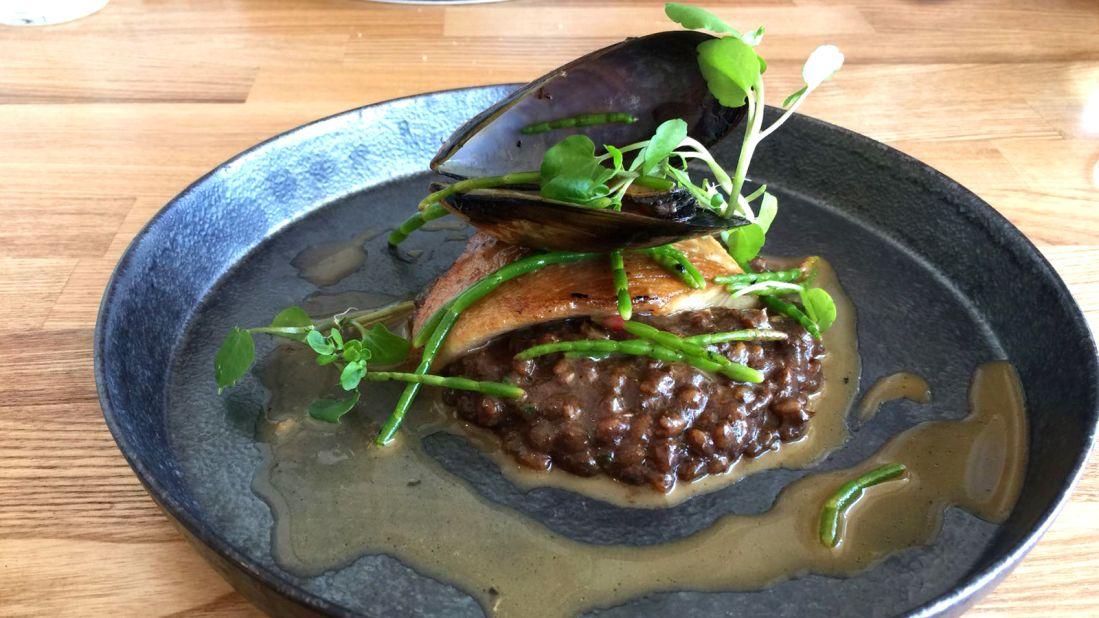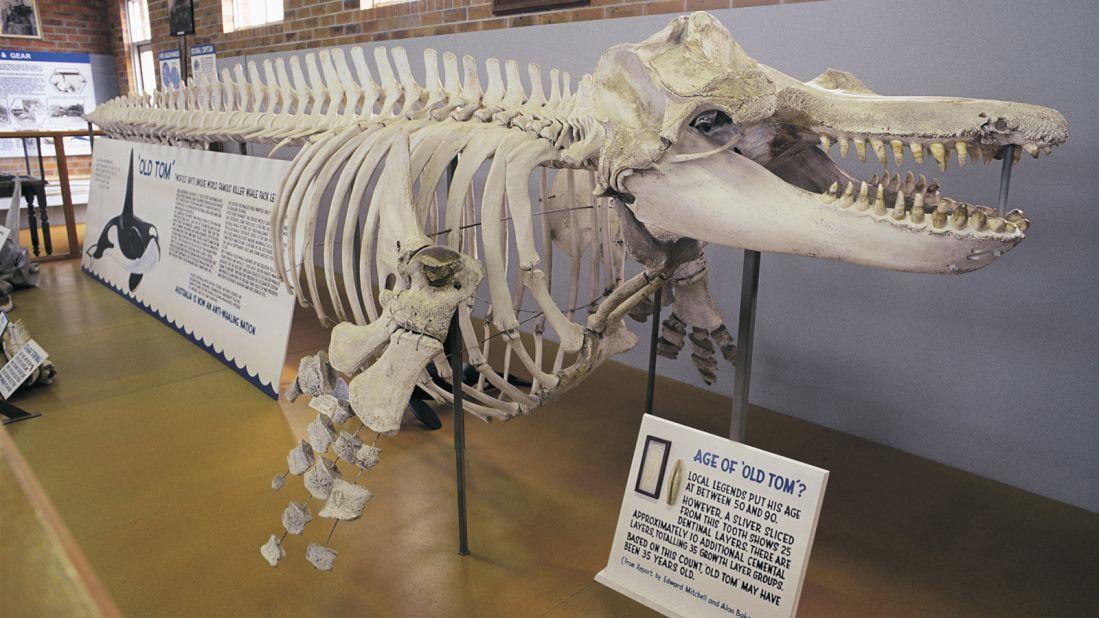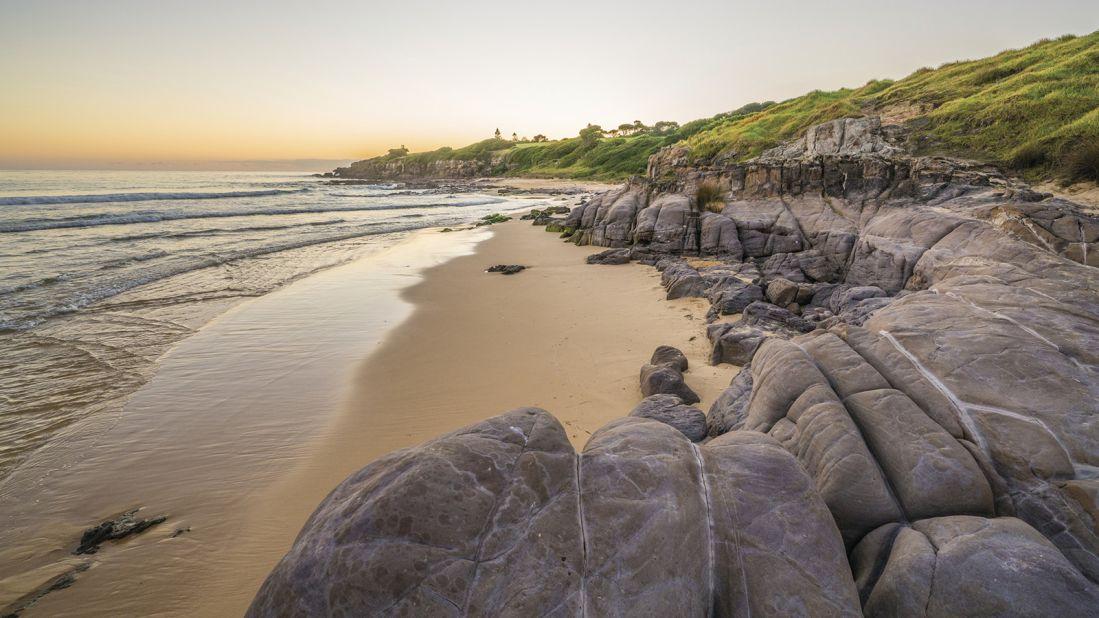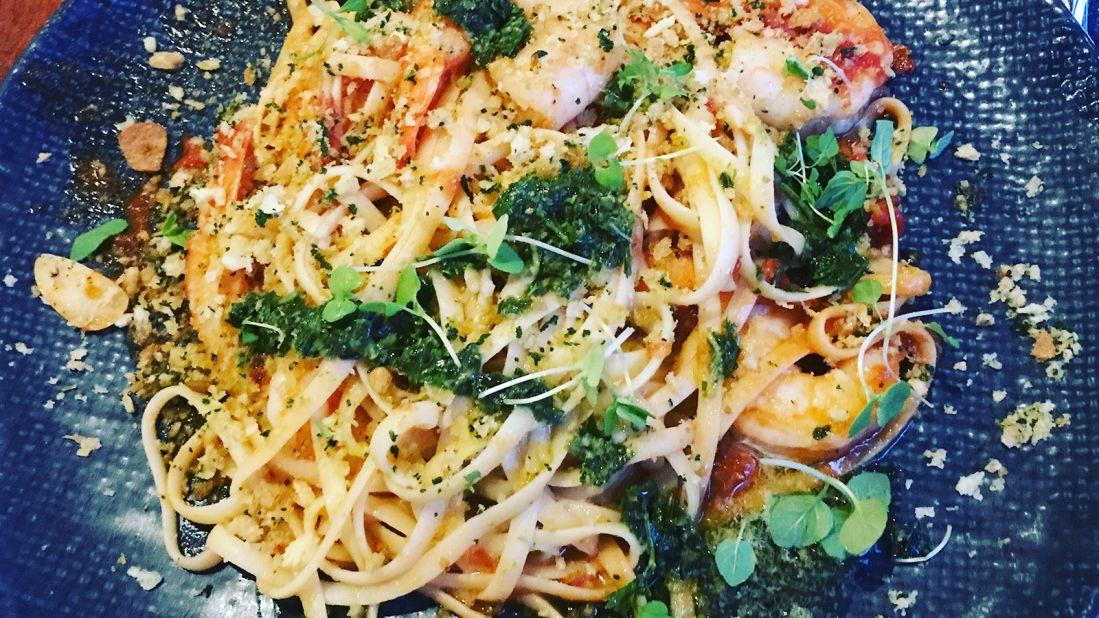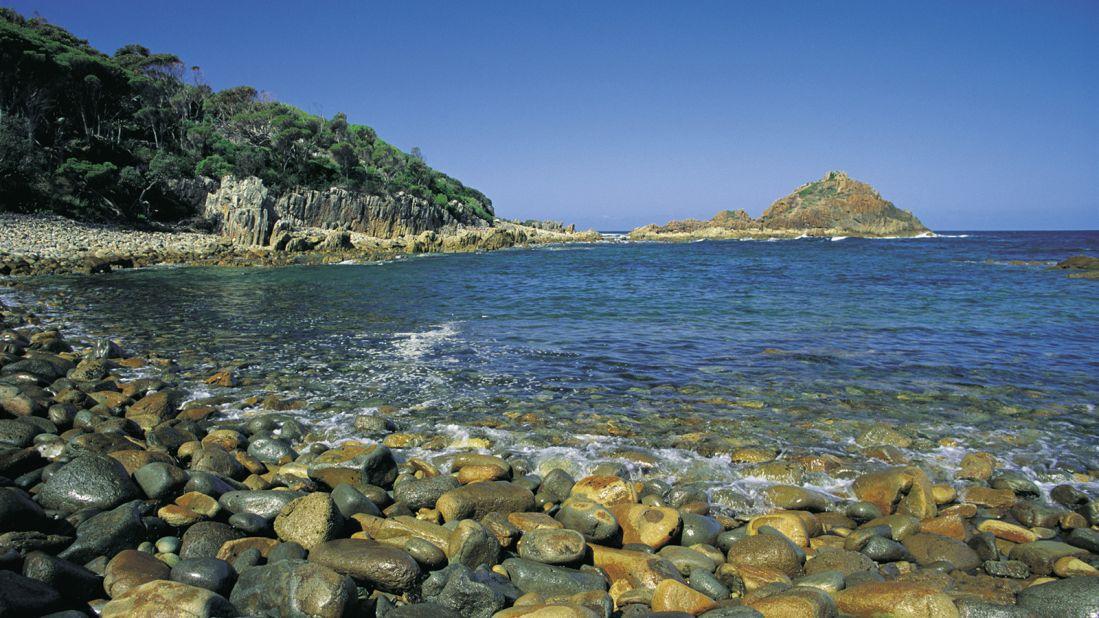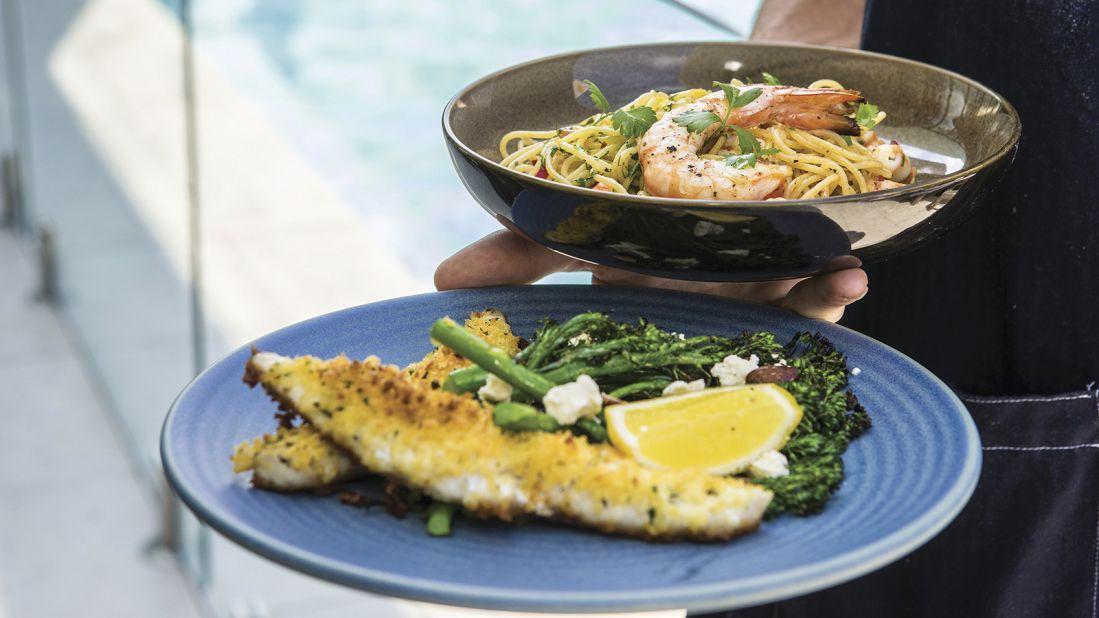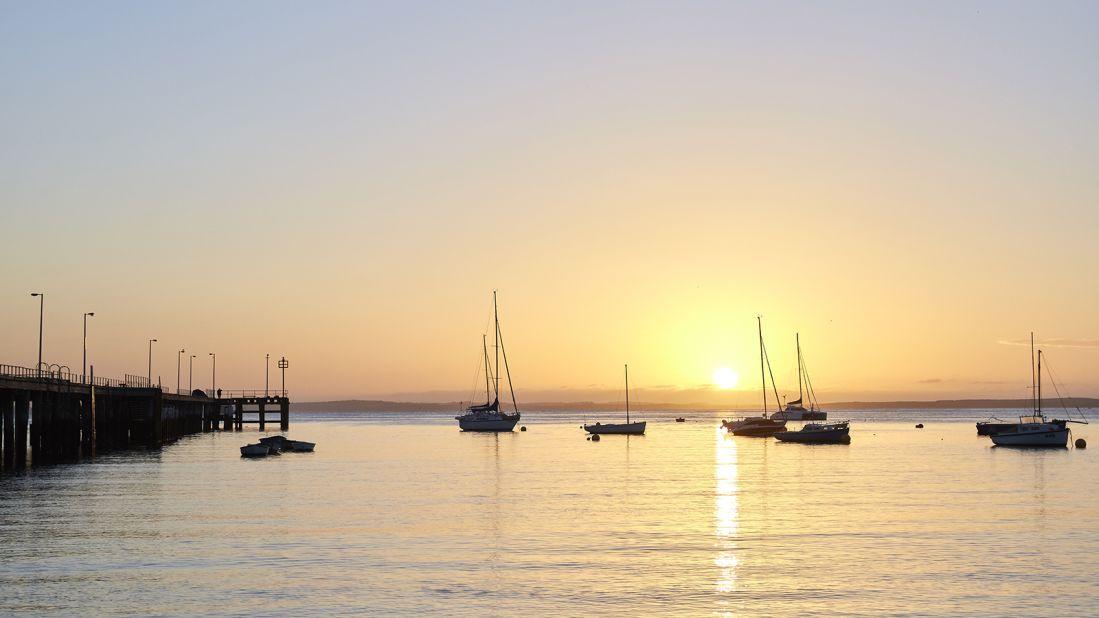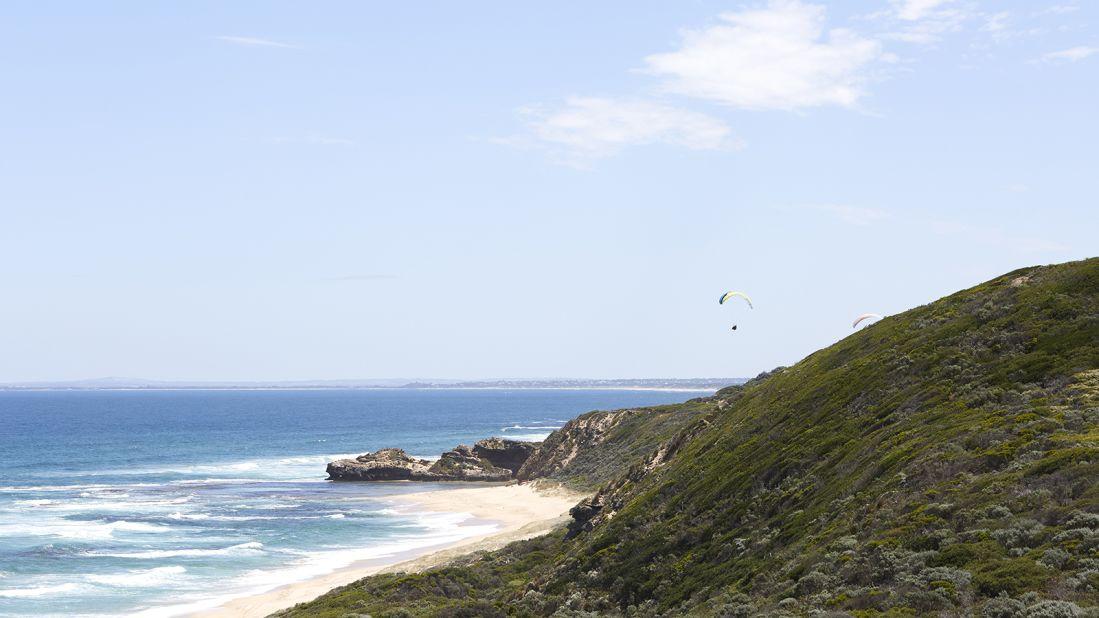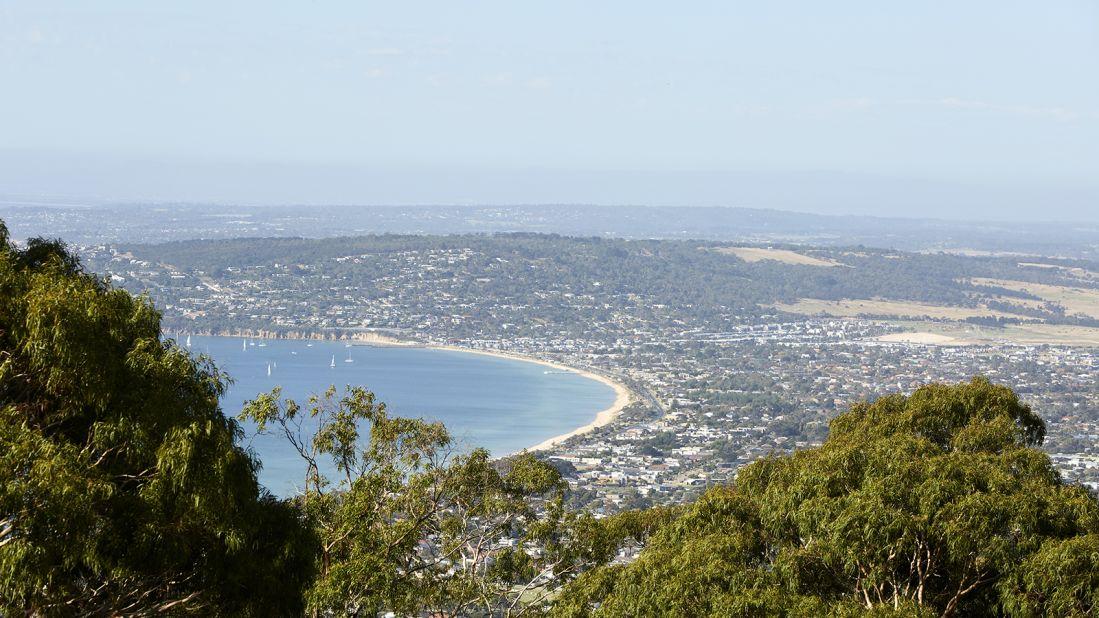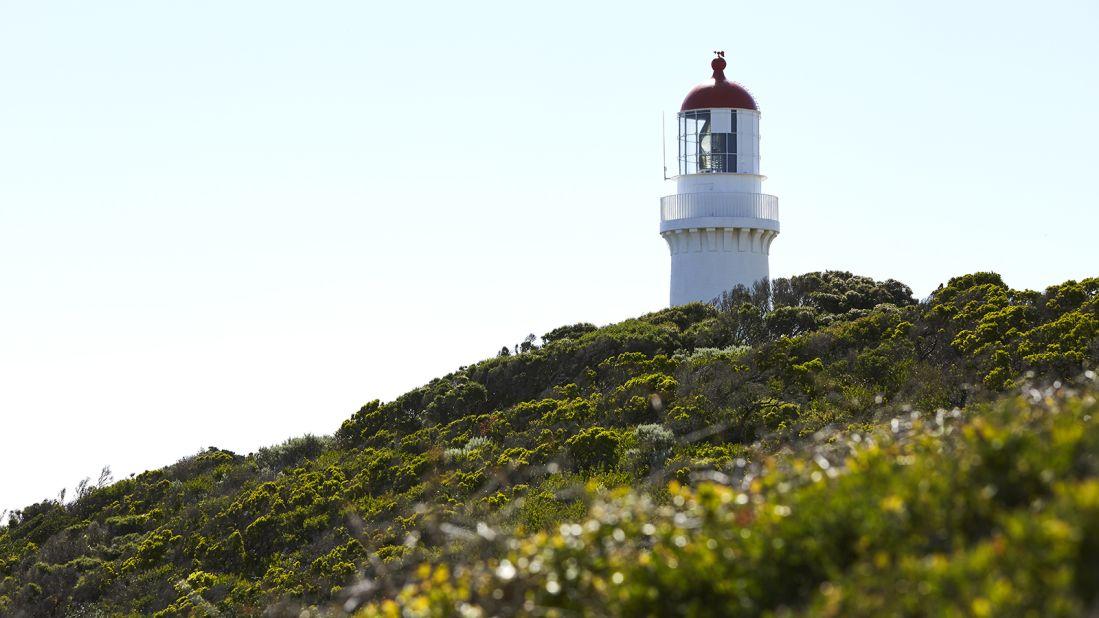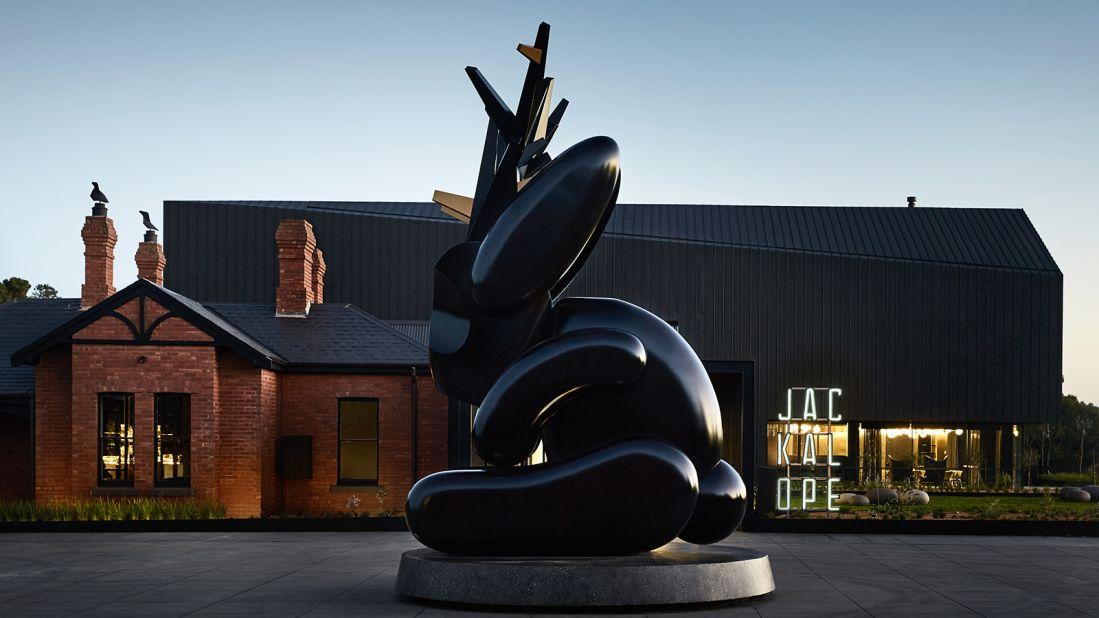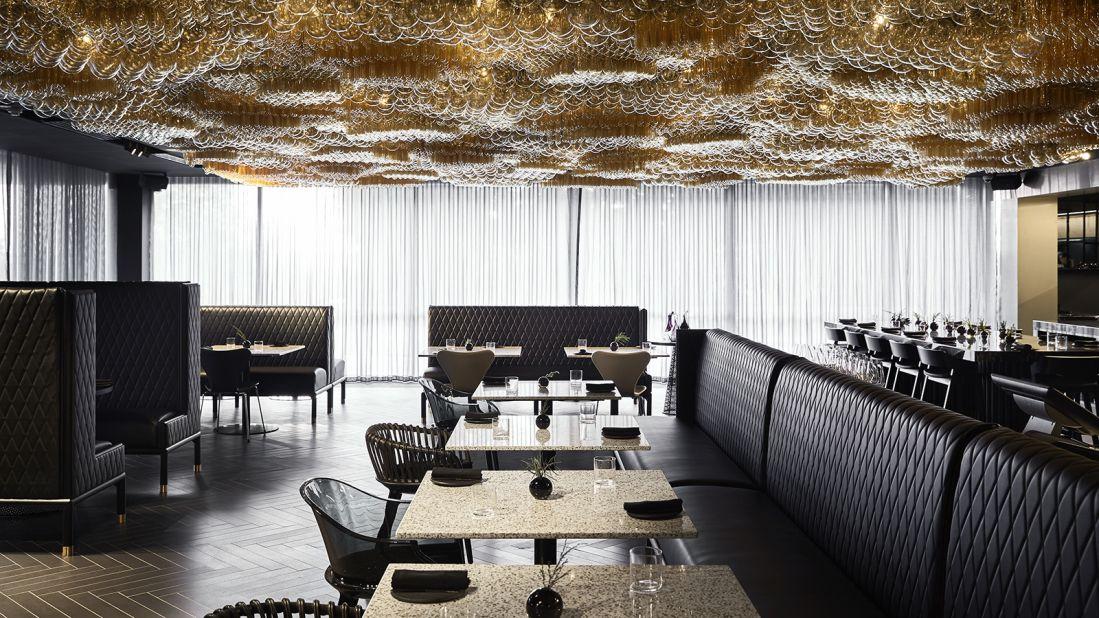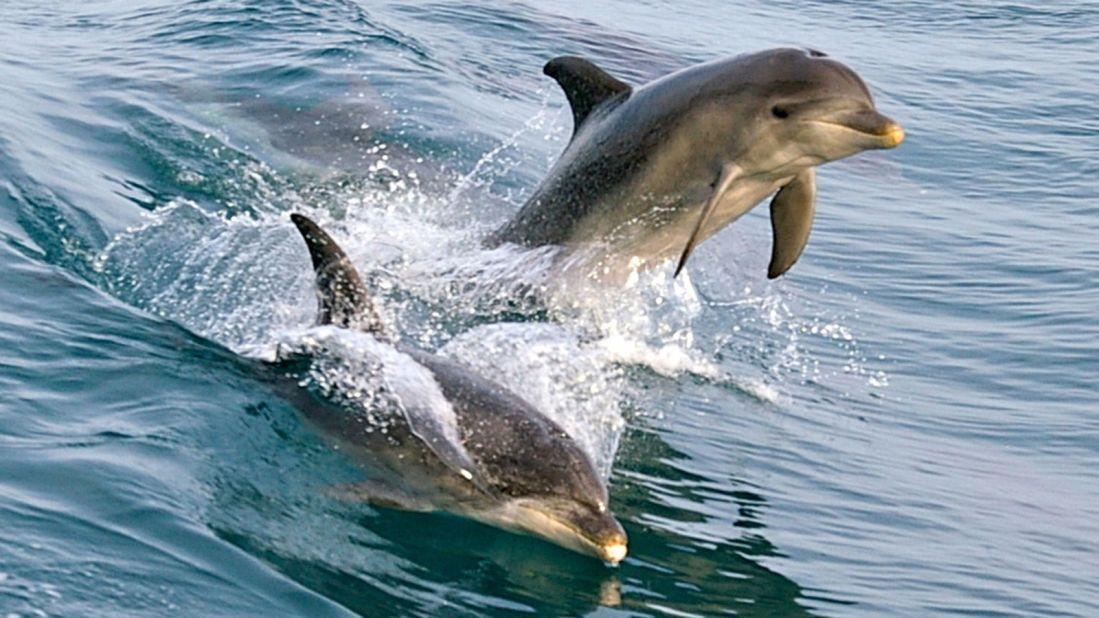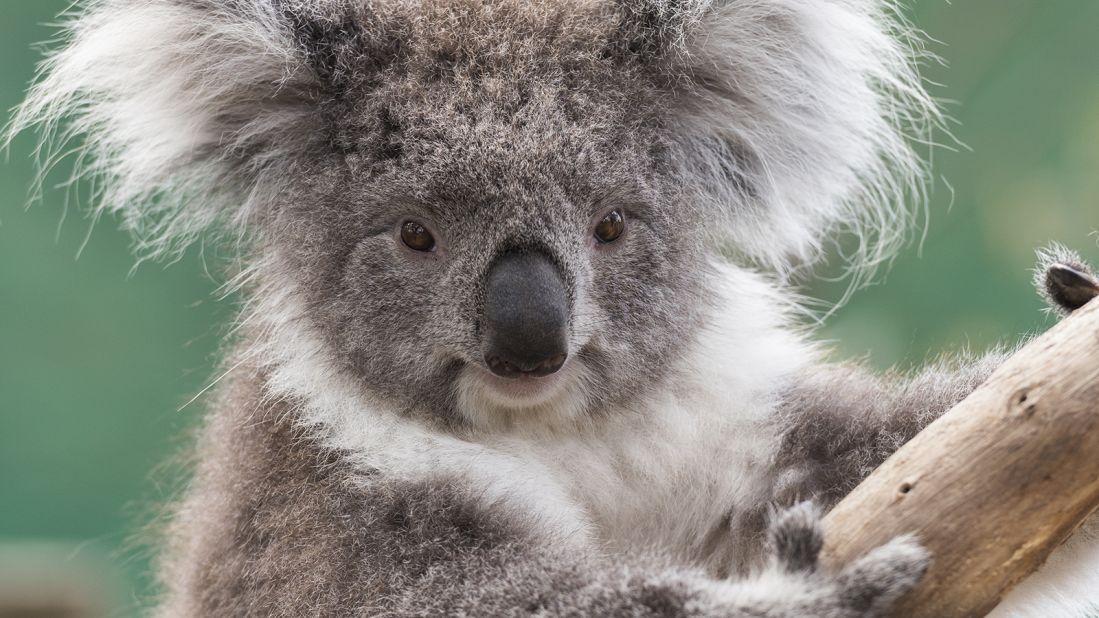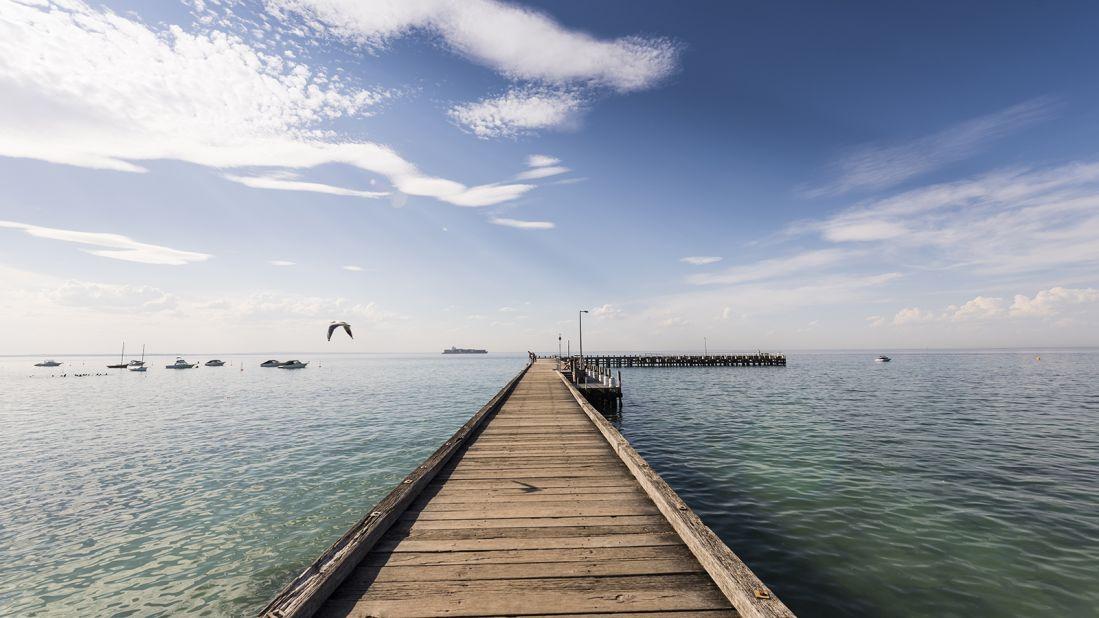A Seaside Journey From Melbourne to Sydney: There's something incomparable about exploring Australia's coastline via a leisurely drive from Melbourne to Sydney. Along this 878-kilometer stretch, you will discover breathtaking moments, such as the remarkable rock formation near Red Point at Boyd's Tower on the Eden Coastline; it's simply one stop of many highlighting Australia's natural beauty. Start your journey comfortably by choosing from a range of Melbourne Hotels to kick-off your travel.
The Jewel of Victoria - Mornington Peninsula: Situated a mere 80 kilometers to the south of Melbourne, Mornington Peninsula has emerged as the most popular destination for day-trippers in Victoria. This magical retreat boasts the illustrious London Bridge, a northern gem within the Mornington Peninsula National Park. Recognized globally for its exquisite sandstone structures, it projects a unique combination of natural beauty and geological grandeur. Extend your stay and enjoy the calming landscapes by booking a cozy space from the choices of hotels in Victoria at https://www.hotelsinvictoria.net/en/.
As you continue your seaside journey from Melbourne to Sydney, there are a plethora of beautiful and unique stays to consider. The best way to fully immerse in Australia's coastal beauty, you pick the best from the available Australian hotels at tophotels.com and get a memorable travel experience.
Sardine: Counted amongst the culinary hotspots of Gippsland, the restaurant known as Sardine has successfully won the hearts of both locals and tourists with its tantalizing food served with a side of expert knowledge. Its pride lies in the scrumptious roast Dory fish fillet, served with an accompaniment of porcini and pearl barley risotto and mussels, making this dish one of the standout food items on the menu.
Experience Batemans Bay, NSW: Picture a scene of tranquility, featuring a lone fishing vessel docked at the wharf, quietly bobbing in the waters of the Batemans Bay under the soothing hues of the breaking dawn. Located in Eurobodalla, this picturesque site is not just eye candy. It's also a gateway to exploring the natural beauty of the region by kayaking. Paddling around Batemans Bay is a fantastic way of delving into this area's glorious natural bounty.
A Fascinating Exhibition at the Eden Killer Whale Museum: The museum in Eden unravels an extraordinary tale of a complex alliance that once bloomed between the local whalers of the town and a group of startling killer whales. One particular exhibit which captures this unique interspecies bond is the skeleton of a killer whale known fondly as 'Old Tom'. This display stands as a testament not only to the unusual friendship that existed but also to the intriguing wildlife found in the region.
Merimbula: Driving a bit northward from Eden will bring you to the seaside gem, Merimbula. Known for its exceptional seafood cuisine and immaculate beach, this coastal town is a must-visit on your route from Melbourne to Sydney.
A Highlight of Dining at Wheelers: Not to be missed on the menu of the acclaimed Wheelers Seafood Restaurant are their sumptuous clam and scallop bouillabaisse, an assortment of seafood full of succulent flavors and cooked to perfection, and their prawn linguine, a popular choice among patrons for its delectable combination of juicy prawns and perfectly al dente pasta. With these exceptional dishes and many more, a dining experience at Wheelers will undoubtedly satisfy your palate.
Mimosa Rocks National Park: Sporting a splendid accumulation of granite rocks adorned by a vibrant layer of lichen, Mimosa Rocks National Park protects and showcases some of the most picturesque landscapes of New South Wales' southern coast. Boasting a multitude of unique flora and fauna, the park's natural beauty offers visitors a memorable experience. Its various sun-kissed trails provide hikers stunning views and close encounters with nature. A visit to this park is an integral part of the majestic coastal journey from Melbourne to Sydney.
While it’s possible to fly from Melbourne and Sydney in an hour and even drive the 878 kilometers in a (long) day, inland via the Hume Highway, there’s a far more captivating way to journey between the Victoria and New South Wales state capitals.
Taking a few days to follow the coastal route offers hundreds of kilometers of wild Australian beaches, backed by expansive waterways and swathes of littoral forest.
With inviting seaside towns and restaurants serving world-class meals interspersed along the way, it’s a route that’s made for leisurely road trips.
Here’s a look at the itinerary CNN Travel experienced during a seven-day drive from Melbourne to Sydney, which gives a sampling of the area’s many scenic, cultural and culinary offerings.
Mornington Peninsula
Mornington Peninsula: Just 80 kilometers (50 miles) south of Melbourne, Mornington recently became the most visited day-trip destination in the state of Victoria. The London Bridge, pictured, is the northernmost beach in Mornington Peninsula National Park. It's famed for its stunning sandstone landforms.
An Enchanting Stop: The Mornington Peninsula, over the past year, has come to be recognized as more than just a pit stop, radiating an almost magical allure. This charming location has truly found its place on the travel map due to its captivating beauty and energetic vibe. The locale is filled with eye-catching sights and has become a hotspot for adventurous spirits and tranquility seekers alike.
The Evolved Travel Scene: Over the past few years, Mornington Peninsula has undergone a noteworthy transformation with the emergence of modern hotels, contemporary eateries, pubs, and boutique wineries. This indeed harbor a new era for the regions' tourist industry. These establishments are breathing fresh life into the local hospitality scene while staying true to the authentic Australian essence. In fact, an intriguing rise of skilled artisans crafting everything from cheese to wine can be observed, altering the region's culinary landscape for the better.
Charm of the Cape: The cape, situated on Port Phillip Bay, is a treasure trove with approximately 150,000 inhabitants. It is much appreciated for its leisurely holiday ambiance. The picturesque surf beaches and the enticing wineries are a couple of its main attractions, along with quaint weekender cottages. The cape, steeped in tradition, often draws visitors due to its relaxed vibes and scenic beauty.
The Vintage Beacon, Cape Schanck Lighthouse: Steeped in rich history, lies one of Victoria's most ancient lighthouses, nestled within the city's precincts of Mornington. Constructed in the year 1859, this magnificent beacon of light known as Cape Schanck Lighthouse, with an imposing height of 21 meters, continues to function remarkably, unfazed by the modern transformations around it, much like its days of inception in the 19th century. The lighthouse offers an astounding testimony to the primordial defensive mariner systems, while lending a timelessly captivating charm to the Victorian landscape.
The Jackalope: An inventive blend of cinema and hospitality is showcased in this 46-room lodging, created by young tycoon and filmmaker Louis Li. This striking establishment, draped totally in black, boasts a towering seven-meter Jackalope sculpture at its entrance. The mythical creature, a hare with antlers, is the brainchild of celebrated local artist Emily Floyd. Not only a hotel, the Jackalope also presents a remarkable contribution to the local art scene.
The Jackalope hotel is a driving force of enchantment and "mystic chemistry" -- a descriptive term they've adopted -- permeates all aspects of its design. Unique elements range from the striking white and gold chairs manufactured by Edra Leatherworks that adorn the bar area, Flagerdoot, to the grandiose display of 10,000 illuminated orbs crafted by the artist Jan Flook, gracing the fine-dining restaurant Doot Doot Doot. This elaborate light installation is a notable feature, adding a poster-worthy sight for guests.
Interestingly, the hotel is known for an eclectic mix of art and elegance. This indulgence in mystical aesthetics, together with its location along the Melbourne to Sydney coastal drive, makes it a must-visit spot in Australia. It's not just a hotel, but an immersive experience into artistry and luxe comfort.
Catalyst in Hospitality: The surging influx of tourists has itself sparked a wave of novel ventures by local endeavors within the hospitality sector, who are willing to innovate their regional amenities.
Exploring the Peninsula Hot Springs: This extravagant establishment is a surpassing labyrinth of more than 20 unique pools, captivating waterfalls, and traditional hammams. These facilities channel the geothermally heated water pervasive in the area, rich in nourishing minerals. Following the recent dedication of an investment totaling AU $13 million (US $9.5 million), the Peninsula Hot Springs witnessed a comprehensive expansion. Now, these hot springs have evolved into an even more impressive haven of relaxation and wellness, ensuring an unforgettable experience for visitors.
The Peninsula Hot Springs expansion: New advancements bring a thrill-inducing fusion of fever and frost (imagine, lavish saunas fusing with frigid snow caverns). Not to mention a mesmerizing water's edge auditorium where audience members can bask in warm waters while enjoying concerts performed live by talented artists.
The Charm of Port Phillip Bay: The coastal town of Mornington at Port Phillip Bay is a hotspot for enthusiasts of marine life, attracting an array of visitors with its dolphin and whale sightings. By opting for an authorized cruising experience or a snorkeling adventure, travelers have the exciting opportunity to observe these majestic sea creatures in their natural habitat. With Mornington's breathtaking coastal beauty, this experience contributes significantly to what makes the Melbourne to Sydney coastal drive an unforgettable journey.
The Enchanting Moonlit Sanctuary: Poised on the culminating point of Mornington Peninsula, this sanctuary is an unmissable Australian delight. It boasts an exquisite collection of over 10,000 local tree species and verdant plant life. Moreover, the sanctuary also provides shelter for more than 30 species of animals in purpose-built enclosures, offering them a habitat as close to their natural environment as possible.
Leaving Melbourne in the afternoon, we begin our journey with a two-hour drive to the Mornington Peninsula wine region, checking into the much-touted Jackalope hotel and vineyard (166 Balnarring Rd, Merricks North; +61 3 5931 2500), where Range Rovers crowd the car park.
Opened in early 2017 by young Melbourne entrepreneur Louis Li, the five-star property has a modernist, alchemistic design, with test tube displays in the lobby area and a striking light globe installation bubbling across the ceiling of restaurant Doot Doot Doot.
Clad mostly in black and staffed by young hipsters, Jackalope has the feel of an upmarket nightclub and isn’t the most comfortable place to lay your head, partly due to its blancmange-like beds.
But it scores for its innovative food and loving approach to wine, with learned sommeliers delivering sermons on each glass paired with dishes on the restaurant’s tasting menu.
East Gippsland
The next morning, after a four-hour drive, we pull up outside Sardine, on the esplanade at Paynesville, in Victoria’s Gippsland Lakes.
“Do you mind if I just send out a few dishes?” asks award-winning chef Mark Briggs, who opened Sardine with partner Victoria Hollingsworth, in October 2017.
We emerge two hours later having sampled seven seasonal, locally sourced dishes, each one memorable for its presentation, texture and taste.
Among the delights are zucchini flower with goat’s cheese and honey from nearby Raymond Island, a roast Dory fish fillet with porcini and pearl barley risotto and mussels, and a fall-off-the-fork Beef short rib.
With delectable food matched by knowledgeable service, Sardine (3/69A Esplanade, Paynesville; +61 3 5156 7135) is a smash hit among Gippsland locals and visitors alike.
Sated, we can only manage a cup of tea at the nearby Nicholson River Winery (57 Liddells Rd, Nicholson; +61 409 568 241), set on a bluff above the waterway. However, there’s still much to learn about Australian winemaking and the “Pinot coast” from owner Ken Eckersley.
Our base in East Gippsland is the village of Metung, with its lakeside hotel of the same name – serving above average pub grub – holiday accommodation and convivial cafes. Occupying a spur jutting into the huge lake system, Metung Hotel (Kurnai Avenue, Metung; +61 351 562 206) is an excellent location from which to explore the waterways in a hired boat.
On the second morning, after grabbing breakfast and a take-away lunch from Bancroft Bites café (2/57 Metung Rd, Metung; +61 3 5156 2854), we venture past scrubby islets and flocks of black swan and pelicans, to Barrier Landing, where a sandbar separates the lake from Ninety Mile Beach and the churning Bass Strait.
Croajingalong National Park
Later that day it’s time to get back on the water, further east, and enjoy a twilight cruise through the twisting Mallacoota Inlet, on the MV Loch Ard, a former ferry built in 1910.
Skippered by abalone diver Dale Winward, who grew up locally, this is a serene journey along the inlet’s creeks and “narrows,” their shores covered in the temperate forests of Croajingalong National Park, and includes handfeeding two sea eagles off the back of the boat.
Next morning, after spending the night overlooking the inlet at Gipsy Point (35 MacDonald St, Gipsy Point; +61 3 5158 8205), we take a short, rocky road off the main Princes Highway toward Genoa Peak, where we find a 1.5-kilometer walking track.
It’s a steep uphill trek, and requires scaling three ladders, bolted into the rock, near the summit, but the effort is rewarded with outstanding views over Mallacoota Inlet, Croajingolong National Park and the whole southeastern Victorian coastline.
